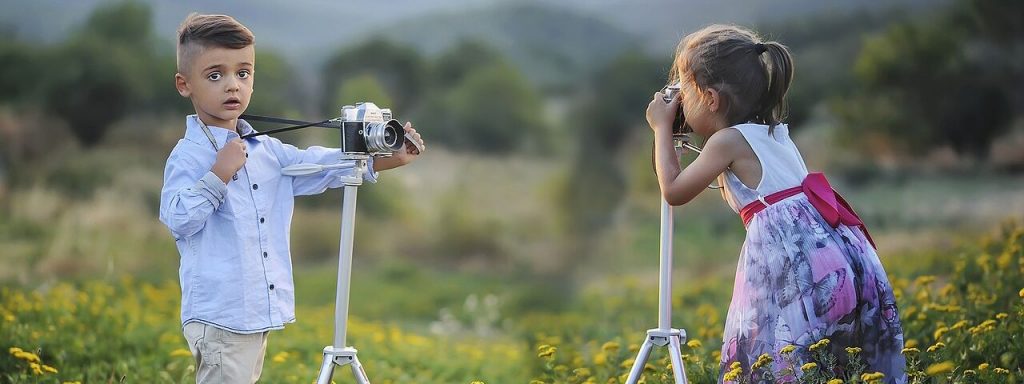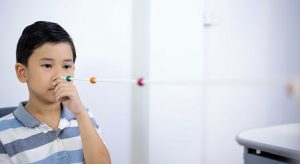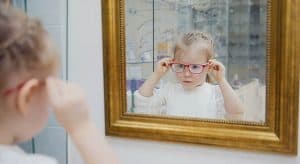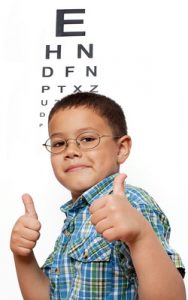Are your child’s eyes school-ready?
The school years place heavy demands on your child’s eyes and vision.
Make sure your child’s eyes are checked on a regular basis— a comprehensive eye exam is critical to ensure your child’s eyes are school-ready.
A child’s physical development, academic performance and overall well-being are all largely dependent on their vision.
Here are 10 facts for school-aged students:
1. Many school-age children are farsighted
As children grow older, their eyes grow too. Many children are farsighted, and have difficulty seeing near objects. This can impact their reading skills and overall academic success.
Farsightedness can lead to strabismus (crossed eyes) and amblyopia (lazy eye), along with learning, reading or attention difficulties.
Many children can compensate by using their focusing muscles to see clearly which can result in learning issues, eye strain and headaches.
2. Limited screen time lowers the risk of myopia and eye strain
Prolonged screen time has been linked to both myopia (nearsightedness) and digital eye strain.
Encourage your child to use the 20-20-20 rule to help combat this: Every 20 minutes, take a break from your computer and focus on an image at least 20 feet away for 20 seconds.
- Another way to limit screen time is to encourage your child to play outdoors. Outdoor play has been shown to lower the risk of myopia.
3. Many vision problems go unrecognized for years
If you watch out for these 3 signs, you may be able to pick up on vision problems early and prevent years of academic struggle:
- Sudden loss of interest in reading or homework
- Losing their place or poor comprehension while reading
- Tilting the head or closing one eye when reading
4. Vision problems can lead to learning disabilities
Many children are diagnosed with dyslexia, ADHD or learning disabilities, when the main cause could be an undiagnosed vision problem.
Learning difficulties are caused by issues with the brain’s ability to process what it sees or hears. So, if your child has a problem with their visual skills, their learning could be impacted.
Vision therapy has been shown to successfully treat many vision problems.
SEE RELATED: Children’s Vision: FAQs
Schedule an eye exam with an eye doctor near you to detect any eye problems in your child.
5. Children can develop eye diseases
Viruses, such as rubella can cause long term damage to a child’s eyes, including cataracts and glaucoma.
Left untreated, pediatric eye diseases can lead to irreparable, abnormal connections between the brain and the eyes.
The good news is that most pediatric eye conditions can be diagnosed during an eye examination by an experienced eye doctor.
6. Color blindness is common in boys
Color vision issues affect over 12% of all boys.
This most common color vision issue is when red and green are confused with one another, both colors appearing as a shade of brown.
Parents typically notice color blindness when a child begins to learn colors.
7. Sports are the #1 cause of eye injury
Most children love sports. However, contact sports or those with fast moving balls, such as baseball, ice hockey, tennis and lacrosse, can pose a significant risk of eye injury.
Sports-related eye injuries occur when a ball directly hits the eye or causes an eyeglass lens to shatter.
The highest incidence of sports eye injuries occur during baseball, among children ages 14 and up.
For this reason, children should wear protective goggles or glasses with polycarbonate lenses while being physically active.
8. Over 90% of children’s eye injuries can be prevented
Many children suffer from eye injuries caused by house-hold cleaning products, pool chemicals or accidental falls.
With the right attention to potential hazards around the house, most eye injuries can be avoided.
Removing toys with sharp points, safely storing cleaning products and preventing children access to dangerous items at home can protect your child from accidental eye injuries.
9. Contact lens care can be challenging for children
Maintaining high levels of hygiene and following the advice from eyecare professionals is absolutely essential when it comes to contact lens wear.
This can protect your child from sight-threatening eye infections.
Monitor your child to ensure that they take appropriate care of their contact lenses.
10. Keep cleaning products away from children
Chemical burns to the eyes can permanently harm both the external and internal structures of the eyes.
If chemicals splash into your child’s eye, wash the eye thoroughly with water and take them to the nearest emergency room.
LEARN MORE: Vision For School
Contact an eye doctor near you to find out more about how to ensure our child’s eyes remain clear and healthy.
A child’s physical development, academic performance, and overall well-being are all largely dependent on their vision.
Be sure your child’s eyes are checked on a regular basis — a comprehensive eye exam is critical to ensure your child’s eyes are school-ready.










